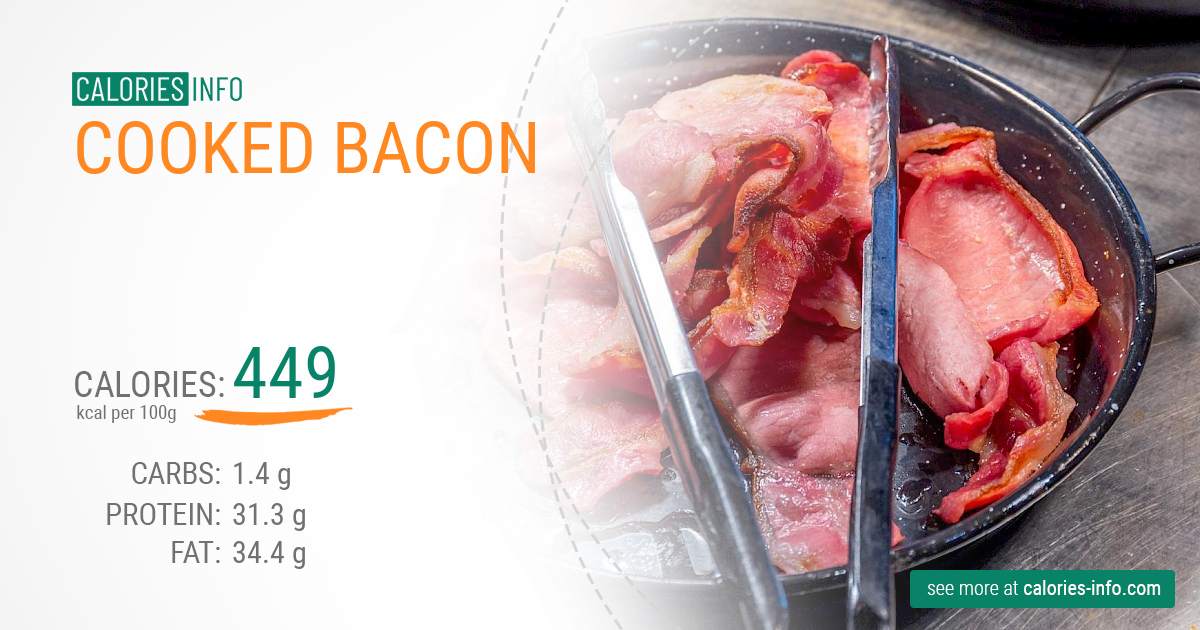How Many Calories in Two Pieces of Bacon? Exploring the Nutritional Content
When it comes to enjoying a delicious breakfast or adding a savory touch to sandwiches, bacon is a popular choice. However, for those conscious about their calorie intake, understanding the nutritional content of foods like bacon is essential. In this article, we will delve into the question, "How many calories in two pieces of bacon?" We'll explore the caloric value of bacon, its nutritional components, and how it fits into a balanced diet.
1. Calories in Two Pieces of Bacon: A Closer Look

Calories in Two Pieces of Bacon: A Closer Look
Bacon, derived from pork, is known for its distinct flavor and crispy texture. Two standard slices of bacon typically weigh around 15 grams. Let's break down the nutritional content:
Calories: On average, two pieces of bacon contain approximately 86 calories. It's important to note that the caloric content may vary slightly based on factors such as thickness and cooking method.
Protein: Two slices of bacon provide around 6 grams of protein. Protein is essential for muscle repair and growth, making bacon a moderate source of this macronutrient.
Fat: Bacon is notably high in fat. Those two slices contain approximately 6.9 grams of fat. While fat is a concentrated source of energy, consuming it in moderation is advisable due to its caloric density.
Saturated Fat: Of the total fat content, around 2.4 grams are saturated fat. Saturated fat should be limited in the diet, as excessive consumption is associated with increased cholesterol levels.
Sodium: Bacon is often salted during processing, contributing to its savory taste. Two slices can contain around 340 milligrams of sodium, which is worth considering for individuals monitoring their salt intake.
2. Comparing Bacon's Caloric Content:

Comparing Bacon's Caloric Content
To put the caloric content of two pieces of bacon into perspective, let's compare it to other common breakfast items:
| Food Item | Calories in Serving | Serving Size |
| Two Bacon Slices | ~86 calories | 15g |
| One Fried Egg | ~90 calories | Large egg |
| Two Toast Slices | ~150 calories | Medium slices |
| Greek Yogurt | ~120 calories | 150g |
| Oatmeal | ~150 calories | 40g dry |
As seen in the table above, two pieces of bacon have a relatively lower calorie count compared to some other breakfast choices. However, it's important to consider the overall nutritional composition of your meal, including vitamins, minerals, and fiber.
3. Incorporating Bacon into a Balanced Diet:
While bacon can be enjoyed as part of a balanced diet, its high fat and sodium content suggest that moderation is key. Here are some tips for incorporating bacon without overindulging:
Pairing with Nutrient-Rich Foods: Combine bacon with foods rich in fiber, vitamins, and minerals. Opt for whole-grain bread, fresh vegetables, or fruits to enhance the nutritional value of your meal.
Lean Protein Sources: To balance out the fat content, consider pairing bacon with lean protein sources such as eggs or yogurt.
Alternate Cooking Methods: Instead of frying, try baking bacon in the oven or using a non-stick pan to reduce the amount of added fats.
Portion Control: Stick to recommended portion sizes. Two slices of bacon can add flavor to your meal without excessive calorie intake.
In conclusion, two pieces of bacon contain approximately 86 calories and offer a moderate amount of protein and fat. While bacon can be a flavorful addition to meals, its high fat and sodium content call for mindful consumption. By incorporating bacon into a well-rounded diet and being conscious of portion sizes, you can savor its taste while maintaining a balanced approach to nutrition. Remember, understanding the caloric content of foods empowers you to make informed choices that align with your dietary goals.